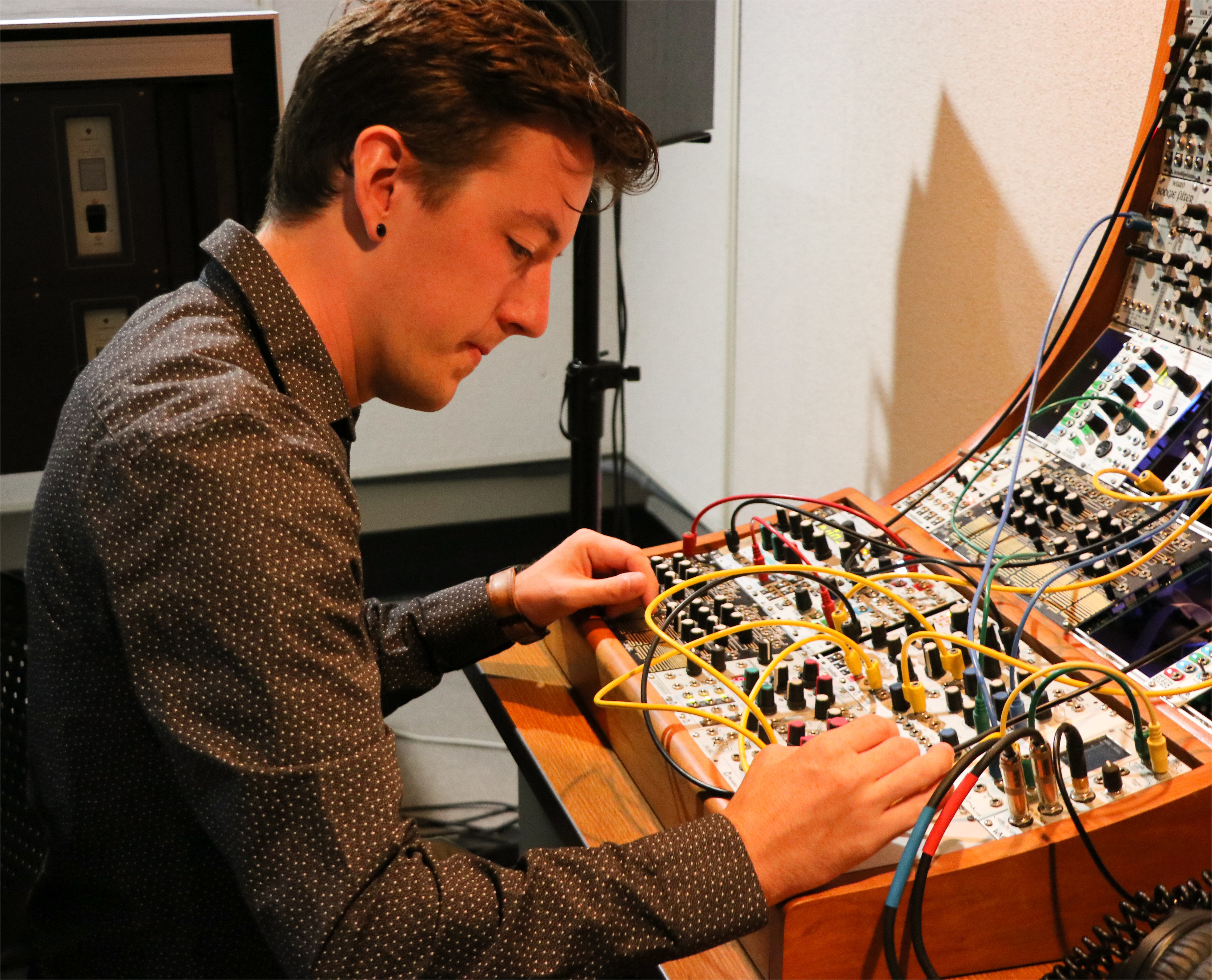
Rodney DuPlessis is a Canadian composer and programmer exploring intersections of science, nature, technology, and music. In his work, he studies processes and patterns from natural and human-made systems to extract latent musicality and visceral sonic narratives. His process incorporates algorithmic and intuitive methods, field recording, software development, sonification, visualization, and microtonality. His creative output includes electroacoustic and chamber music, museum installations, live electronics performances, network music collaborations, and software for sound processing and synthesis.
His music has been performed internationally and recognized by prizes such as the Musica Nova International Competition (Finalist), Destellos International Competition 2020 (honorable mention), the Corwin Award for Excellence in Composition (1st prize - Percussion, 1st prize - Solo, 2nd prize - Electroacoustic), and the 2020 SEAMUS/ASCAP award (finalist). He has collaborated with new music luminaries such as Los Angeles Percussion Quartet, Formalist Quartet, Hocket, Henrique Portovedo, and Scott Worthington. DuPlessis is a member of SUDO ensemble and former lead vocalist of the progressive metal band Tactus.
As a programmer, DuPlessis creates innovative sound processing and synthesis software and works to preserve and reincarnate preexisting software. In 2020, he, along with Curtis Roads and Jack Kilgore released EmissionControl2, an interactive real-time application for granular synthesis. He has developed VST plugins for his novel spectral processing methods (PRISM) as well as a signal generator based on the linear dynamics of a coupled oscillator network (CHON). In 2021, he released QHOSYN, a synthesizer that sonifies a quantum wave function.
DuPlessis is dedicated to promoting the presentation of new music and art. In 2018 he directed the UCSB Summer Music Festival: a 2-day festival celebrating new music and diversity. As Technical Coordinator at the Center for Research in Electronic Art Technology (CREATE) from 2017-2020, he managed three electronic music studios and worked with Curtis Roads to present concerts and talks related to computer music. DuPlessis is is co-creative director of the Nomadic Soundsters art collective.
DuPlessis' teachers have included Curtis Roads, Clarence Barlow, João Pedro Oliveira, and Martin Kutnowski, in addition to masterclasses and workshops with Alvise Vidolin, Nicola Bernardini, Annette Vande Gorne, Douglas Quin, Philip Samartzis, and others. He holds a Bachelor of Arts in Music and Psychology, Masters of Arts in Composition, Masters of Science in Media Arts & Technology, and PhD in Composition at UC Santa Barbara.
Compositions
In Coacervate, I used a variety of techniques to encode the chemistry of coacervation into music. I used several original software applications, including EmissionControl2, Prism-Dilate, and NMR-spectroscope. Coacervation occurs when polyanion and polycation polymers coalesce into a dense phase within a dilute solution (like liquid bubbles suspended in liquid). The sound material consists of field recordings from a chemical lab, recordings of the violin, and synthetic sounds based on chemical structure. One of the methods of synthesis involved using Nuclear Magnetic Resonance Spectroscopy data to sonify the spectral characteristics of the polyelectrolytes. NMR data encodes the structure of the complex molecules by recording the resonant frequencies of the constituent carbon atoms. This is the state of the art method scientists use to understand molecular structure today. This new method of molecular sonification seems to be among the most direct translations from science to music as the molecules literally resonate like an instrument (albeit at a high frequency that must be transposed down many octaves).